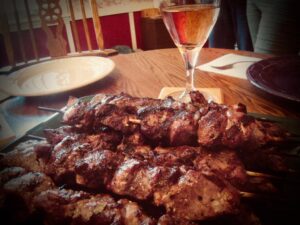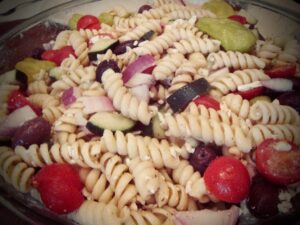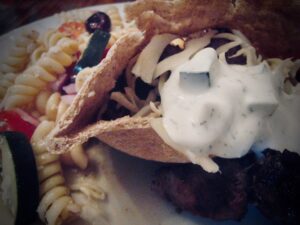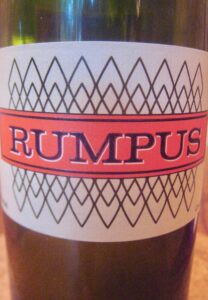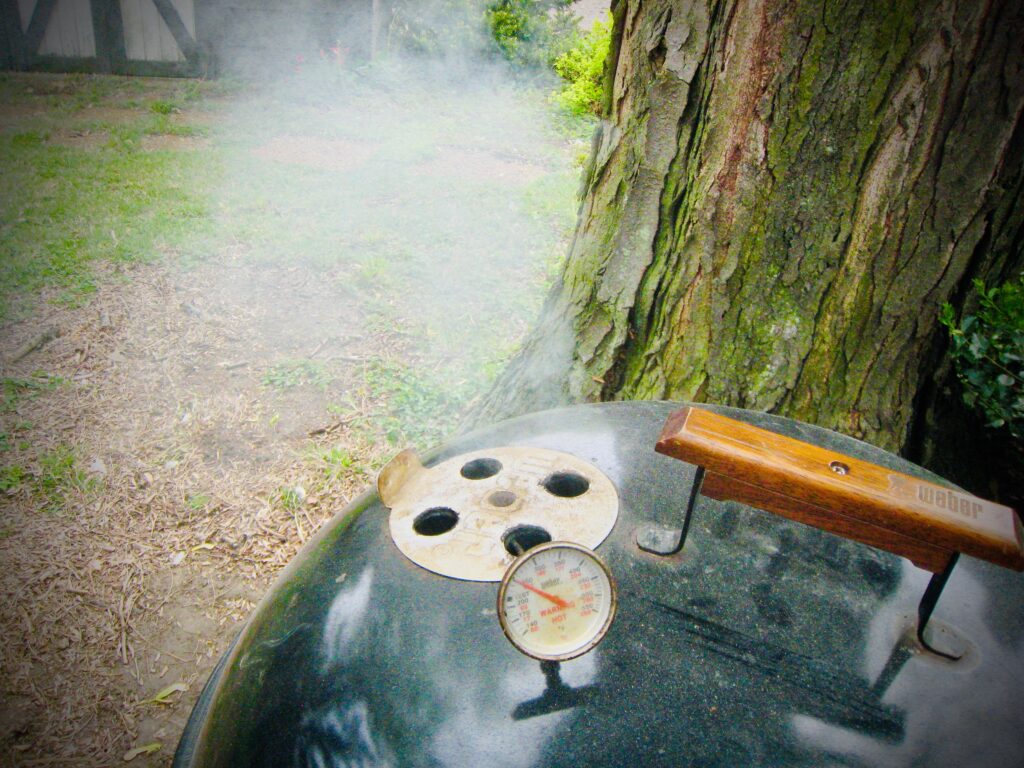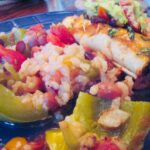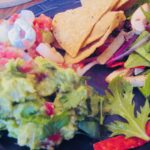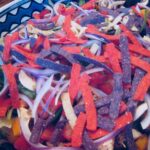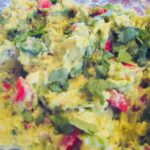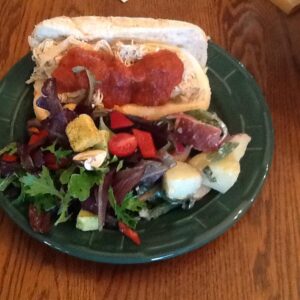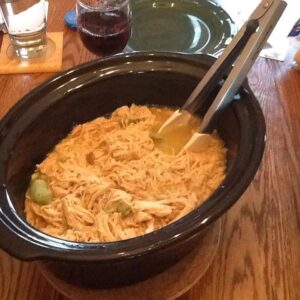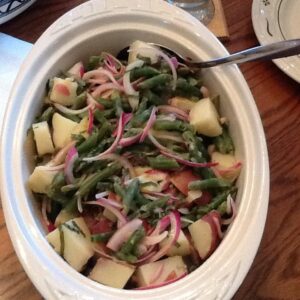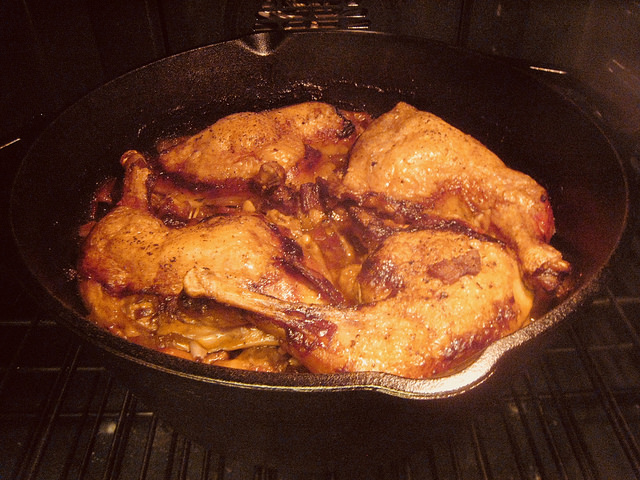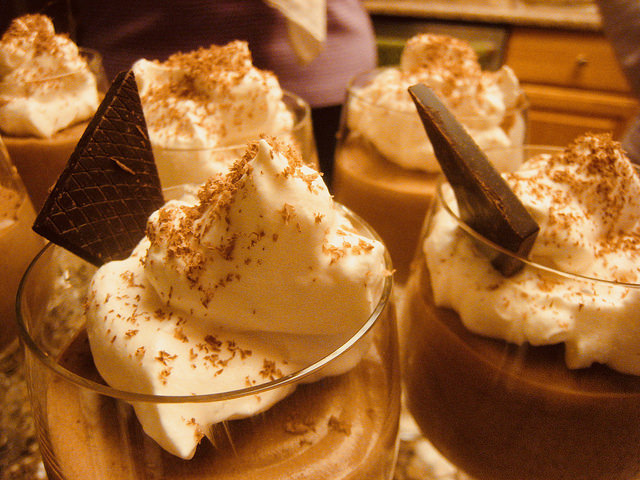Sunday Dinner – May 27th 2018
For this Sunday of Memorial Day weekend, we had one of our favorite kabob dishes, Souvlaki (which literally means “little skewers” in Greek).
The recipe comes from The Spruce. I found it after we attended the Annunciation Church picnic a few years ago, and loved the flavors. We’ve had these maybe half a dozen times in the years since, and they’re always delicious. We served the pork in pitas with cabbage shreds and yogurt Tzatziki, using a recipe from the same site. The Greek-inspired flavors were echoed in a pasta salad recipe from the Hamilton Beach food blog.
For dessert, I tried my hand at classic Southern banana pudding. I’ve made custards a few times in the past (mostly for homemade ice cream), but this was my first attempt at pudding proper. Although I made a rookie mistake (misreading tablespoons versus teaspoons for the vanilla), it turned out fine. Claudia made fresh whipped cream to go on top, which certainly helped. We served it in vintage Currier & Ives bowls that had belonged to Claudia’s Grandma Wulff, bringing back fond memories of her Sunday Dinners long ago.
One of the nice things about this meal is that everything could be prepared the day before. It only took about twenty minutes to grill the skewers, so the rest of the day was spent enjoying the company of our regular Sunday crew.
We opened a very nice Rosé of Pinot Noir from Evangelos Bagias before the meal, and served a hearty Scott Peterson Rumpus Chaos (a cuvée of Petite Sirah, Alicante Bouchset and Grenache) with the food.
Monday’s meal will be more traditional American fare including cheeseburgers, three bean salad – and one of my childhood favorites, a cherry salad that my mom used to make. Here’s wishing everyone happiness, health, peace and safety as we observe Memorial Day 2018.
